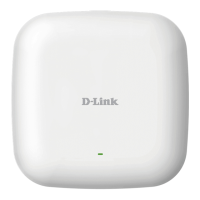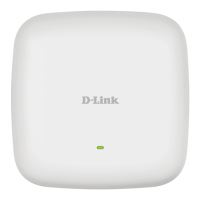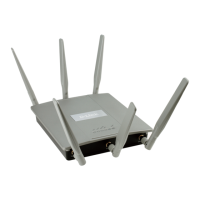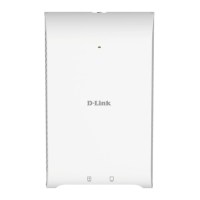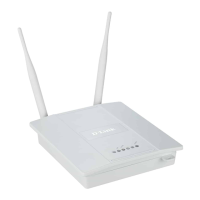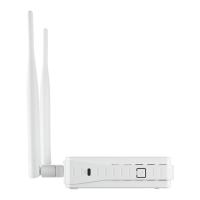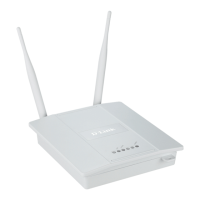D-Link DAP-2660 User Manual
14
Select to Enable or Disable wireless
encryption here.
When the encryption option is enabled,
select the key type here. Options to choose
from are HEX and ASCII.
When the encryption option is enabled,
select the key size here. Options to choose
from are 64 Bits and 128 Bits.
Select the key index value used here. The keys 1 to 4 can be selected.
Enter the wireless WEP key in the space provided here. When HEX was selected as the key type, the network key must
consist out of the numbers 0 to 9 and the letters A to F. When ASCII was selected as the key type, the network key can
consist out of any ASCII characters.
Re-enter the wireless WEP key in the space provided. This key must be identical to the network key entered previously.
Authentication:
Encryption:
Key Type:
Key Size:
Key Index (1~4):
Network Key:
Conrm Key:
Select the wireless authentication method to use here. Options to choose from are Open System, Shared Key, WPA-Personal,
WPA-Enterprise, and 802.1X. After selecting the Open System option, the following parameters will be available for
conguration. Open System to communicate the key across the network (WEP).
Wireless security is a key concern for any wireless network installed. Unlike any other networking method wireless networks will broadcast it’s presence for
anyone to connect to it. Today, wireless security has advanced to a level where it is virtually impenetrable.
There are mainly two forms of wireless encryption and they are called Wired Equivalent Privacy (WEP) and Wi-Fi Protected Access (WPA). WEP was the rst
security method developed. It is a low level encryption but better than now encryption. WPA is the newest encryption standard and with the advanced WPA2
standard wireless networks have nally reach a point where the security is strong enough to give users the peace of mind when installing wireless networks.
WEP provides two variations called Open System and Shared Key.
Open System will send a request to the access point and if the key used matches the one congured on the access point, the access point will return a success
message back to the wireless client. If the key does not match the one congured on the access point, the access point will deny the connection request from
the wireless client.

